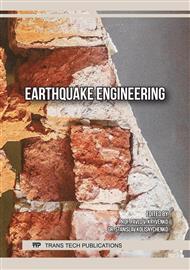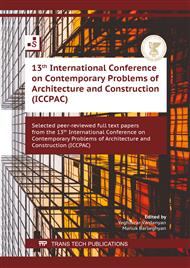p.1
p.13
p.19
p.31
p.37
p.43
p.51
p.59
Design of Sustainable Earthquake Resisting Structures
Abstract:
The main purpose of multifunction design (MD) is to ensure the sustainability of structural systems under different seismic conditions. MD compares and analyses current and projected states of response for changing natural conditions, such as earthquakes, controls seismic behaviour, modification and replacement of existing parts, optimizes shapes, sizes and energy dissipation as planned. If nature were to design an earthquake resistant structure (ERS) it would probably resort to MD and Performance Control (PC) rather than conventional methods of design. Unlike conventional methods, MD also addresses the possibilities of post-earthquake realignment and repairs (PERR) of ERS. The purpose of this article is to demonstrate that resilient structures can be materialized, through emulation of MD without resorting to untenable costs and technologies. In the interim a number of relatively new ideas including Structures of Uniform construction, Multifunction detailing and the Fail-safe (FS) concept have also been introduced.
Info:
Periodical:
Pages:
1-12
Citation:
Online since:
February 2022
Keywords:
Price:
Сopyright:
© 2022 Trans Tech Publications Ltd. All Rights Reserved
Share:
Citation:



